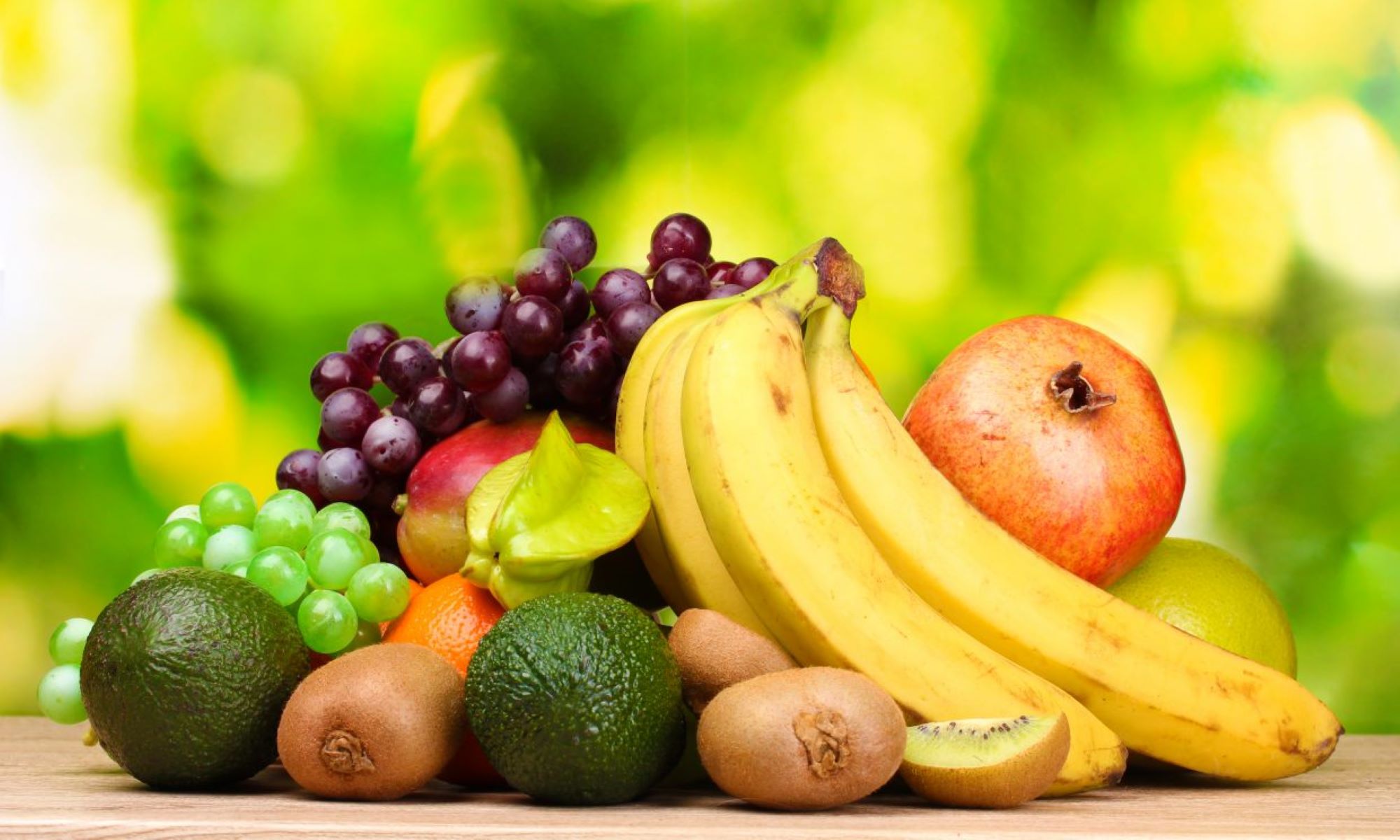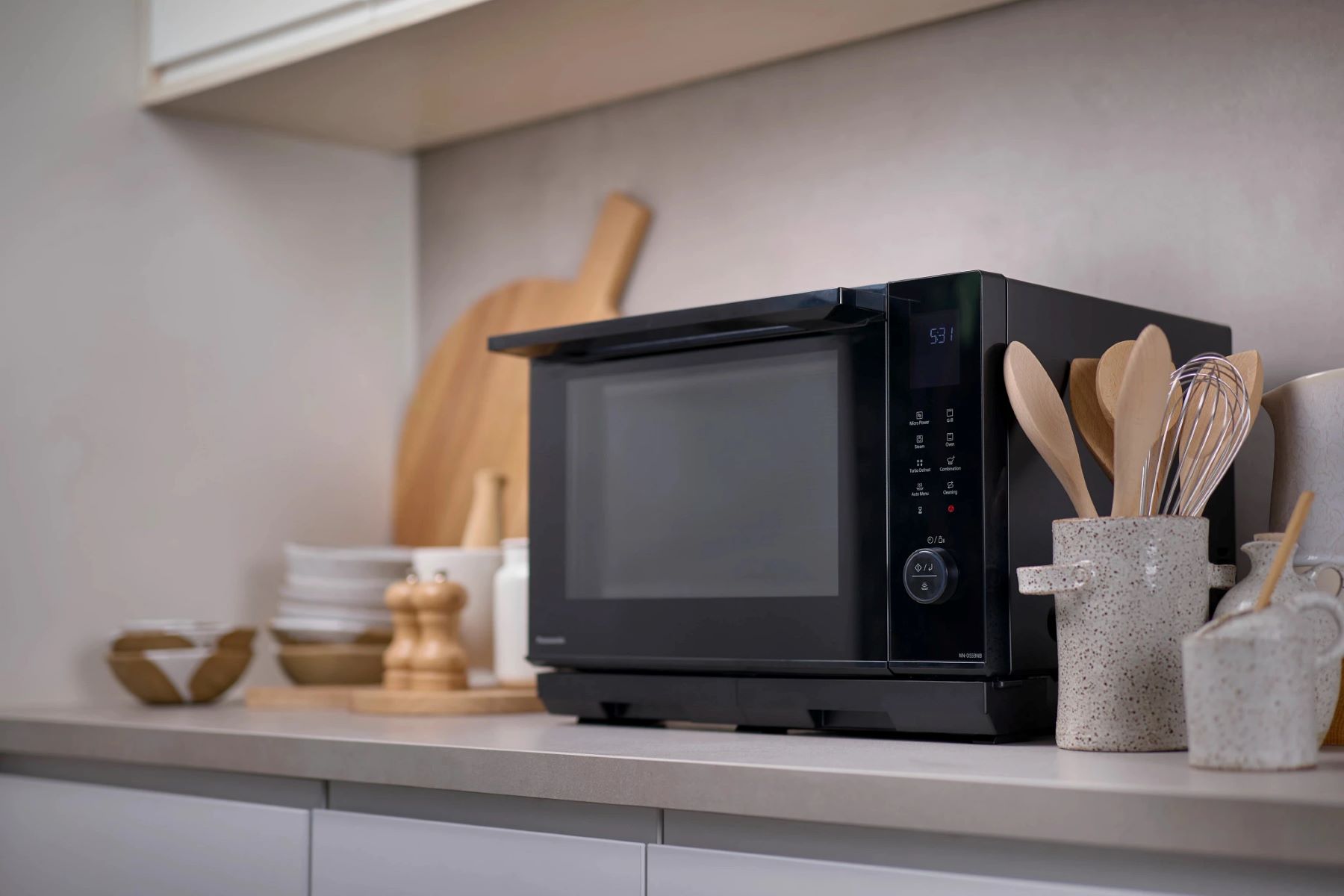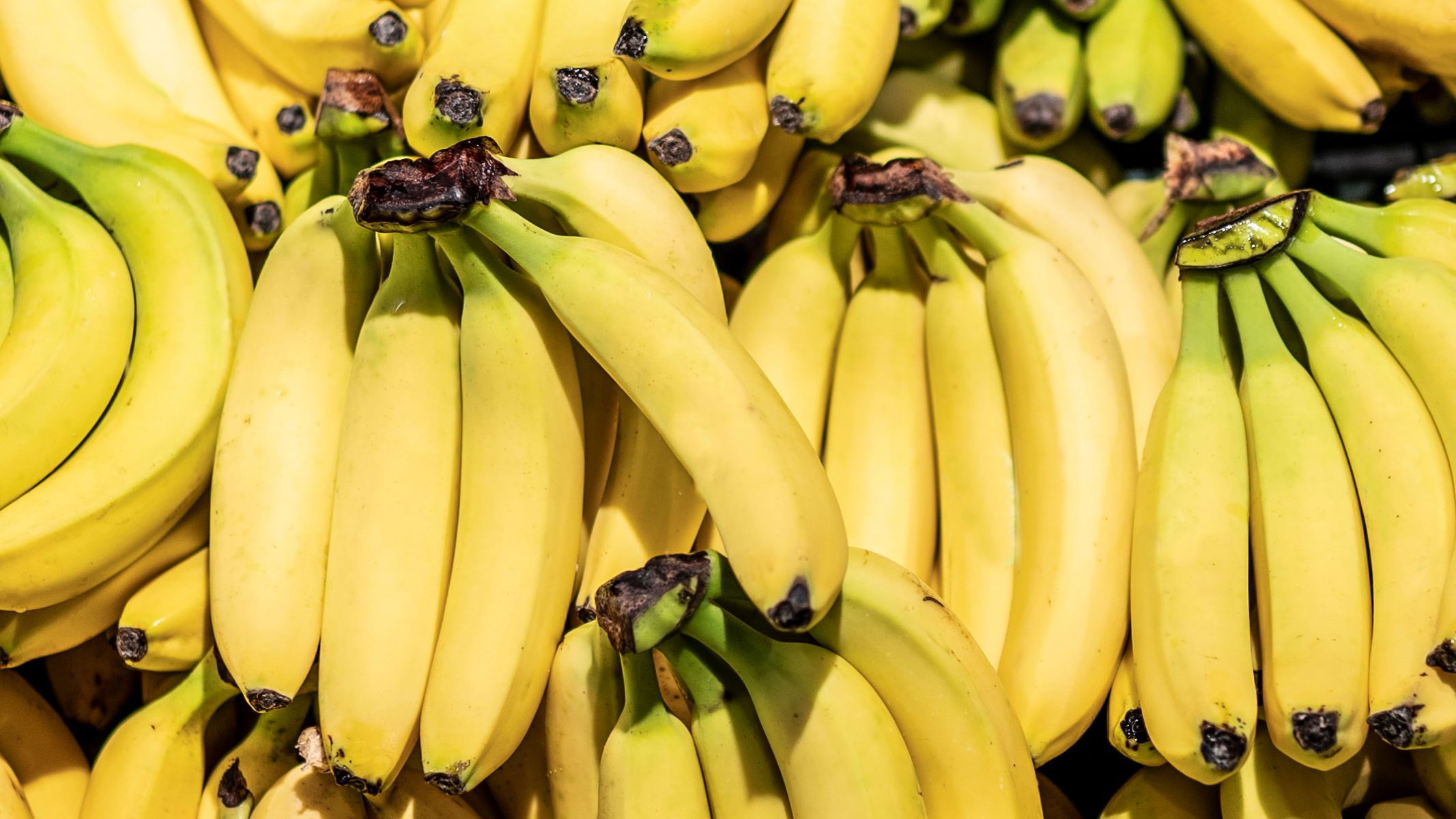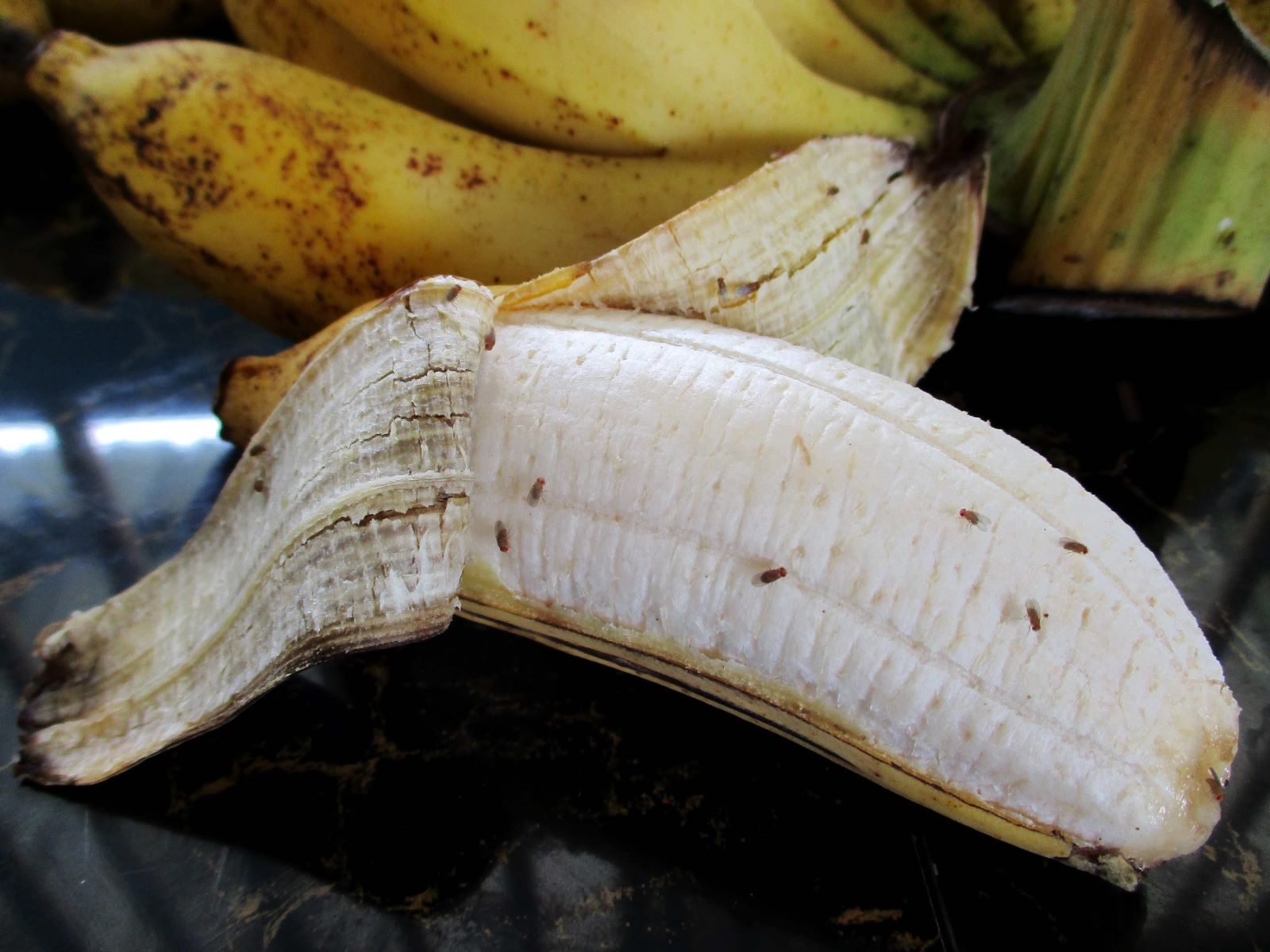Home>Food and Cooking>Surprising Fruit Storage Hack: Why You Should Never Put Refrigerated Fruit Back On The Counter!


Food and Cooking
Surprising Fruit Storage Hack: Why You Should Never Put Refrigerated Fruit Back On The Counter!
Published: February 11, 2024
Discover the surprising fruit storage hack that explains why refrigerated fruit should never be put back on the counter. Learn more about food and cooking tips!
(Many of the links in this article redirect to a specific reviewed product. Your purchase of these products through affiliate links helps to generate commission for Regretless.com, at no extra cost. Learn more)
Table of Contents
Introduction
Have you ever wondered about the best way to store your fruits to keep them fresh and delicious for as long as possible? It's a common dilemma for many households, and the solution might not be as straightforward as you think. In this article, we'll delve into the fascinating world of fruit storage and uncover a surprising hack that could change the way you handle your fruits.
Fruits are not only delightful treats for the taste buds but also nutritional powerhouses, providing essential vitamins, minerals, and fiber. However, improper storage can lead to premature spoilage, diminishing their quality and taste. To understand the optimal way to store fruits, we need to explore the science behind fruit storage and the impact of different storage methods on their longevity and freshness.
Join us on this journey as we unravel the mysteries of fruit storage and discover a simple yet effective hack that could revolutionize the way you preserve your favorite fruits. Let's delve into the intricate world of fruit storage and unlock the secrets to maintaining their flavor and nutritional value.
The Science Behind Fruit Storage
The science behind fruit storage is a fascinating realm that delves into the intricate processes that occur within fruits after they are harvested. Fruits are living organisms, and even after being plucked from the tree or vine, they continue to undergo metabolic activities. Understanding these processes is crucial in determining the most effective methods for storing fruits to maintain their freshness and flavor.
One of the key factors influencing fruit storage is respiration. Fruits respire, a process in which they take in oxygen and release carbon dioxide, water vapor, and heat. This metabolic activity is essential for the ripening of fruits but also contributes to their eventual deterioration. The rate of respiration varies among different fruits and is influenced by factors such as temperature, humidity, and the presence of ethylene gas.
Temperature plays a pivotal role in fruit storage. Most fruits are sensitive to extreme temperatures, which can accelerate their ripening or lead to chilling injury. For instance, tropical fruits like bananas and mangoes are susceptible to chilling injury when exposed to temperatures below their tolerance levels. On the other hand, some fruits, such as berries, are highly perishable and require cooler temperatures to prolong their shelf life.
Humidity is another crucial factor in fruit storage. Fruits with high water content, such as berries and citrus fruits, benefit from higher humidity levels to prevent dehydration and maintain their juiciness. Conversely, fruits with lower water content, like apples and pears, require lower humidity levels to prevent excess moisture accumulation, which can lead to decay.
The presence of ethylene gas, a natural plant hormone, also influences fruit storage. Ethylene is involved in the ripening process and can either accelerate or inhibit the ripening of fruits, depending on the concentration and the type of fruit. Some fruits, known as ethylene producers, release higher levels of ethylene as they ripen, while others, known as ethylene-sensitive fruits, are prone to accelerated ripening when exposed to high ethylene concentrations.
By understanding the interplay of respiration, temperature, humidity, and ethylene gas, we can optimize fruit storage conditions to extend the shelf life and preserve the quality of fruits. This knowledge forms the foundation for implementing effective fruit storage practices that minimize spoilage and waste while maximizing the enjoyment of fresh, flavorful fruits.
Why Refrigerated Fruit Should Not Be Put Back on the Counter
When it comes to fruit storage, the transition of fruits from the refrigerator to the counter is a critical aspect that significantly impacts their freshness and longevity. Refrigeration is a common method of preserving fruits, as it helps slow down the ripening process and extends their shelf life. However, once fruits have been refrigerated, it's essential to understand why returning them to room temperature on the counter can have adverse effects on their quality.
The main reason refrigerated fruit should not be put back on the counter is the potential for accelerated deterioration. As mentioned earlier, fruits undergo respiration, a metabolic process that continues even after they have been harvested. When fruits are refrigerated, the cold temperature slows down their respiration rate, effectively delaying the ripening process and preserving their freshness. However, when these refrigerated fruits are brought back to room temperature on the counter, their respiration rate increases once again.
This resurgence in respiration activity can lead to accelerated ripening, causing the fruits to soften, become overly ripe, and eventually spoil at a faster rate. Additionally, the fluctuation in temperature from cold storage to room temperature can create condensation on the fruit's surface, promoting the growth of mold and bacteria, further hastening their decay.
Moreover, the exposure to ethylene gas, which is naturally produced by certain fruits as they ripen, can have a profound impact when refrigerated fruits are returned to the counter. Ethylene is known to stimulate the ripening process in ethylene-sensitive fruits, potentially causing them to ripen unevenly, develop off-flavors, and lose their optimal texture.
Another factor to consider is the potential loss of nutritional value. Fluctuations in temperature and accelerated ripening can lead to a reduction in the nutritional content of fruits, including the degradation of essential vitamins and antioxidants, diminishing their overall health benefits.
In essence, the abrupt transition from refrigeration to room temperature can compromise the texture, flavor, and nutritional quality of fruits, ultimately diminishing their appeal and desirability.
Understanding the impact of temperature fluctuations on refrigerated fruits underscores the importance of adopting alternative fruit storage methods that minimize these adverse effects. By exploring alternative approaches to fruit storage, we can ensure that our fruits remain fresh, flavorful, and nutritionally rich, enhancing our overall culinary experience and promoting sustainable consumption practices.
The Potential Risks of Putting Refrigerated Fruit on the Counter
The transition of refrigerated fruits to the counter poses several significant risks that can compromise their quality and shelf life. Understanding these potential risks is essential for implementing effective fruit storage practices and minimizing unnecessary waste.
One of the primary risks associated with putting refrigerated fruit back on the counter is the accelerated ripening process. When fruits are subjected to fluctuating temperatures, especially the transition from cold refrigeration to room temperature, their respiration rate increases, leading to a hastened ripening process. This accelerated ripening can result in fruits becoming overly ripe, mushy, and susceptible to spoilage in a relatively short period.
Furthermore, the exposure to ethylene gas, a natural plant hormone released by certain fruits as they ripen, can exacerbate the risks of placing refrigerated fruits on the counter. Ethylene is known to promote the ripening of ethylene-sensitive fruits, potentially causing uneven ripening and the development of off-flavors and textures. This can lead to a loss of desirable qualities in the fruits, diminishing their appeal and palatability.
Another significant risk is the potential for moisture accumulation on the fruit's surface when transitioning from refrigeration to room temperature. The condensation that forms can create an ideal environment for mold and bacterial growth, hastening the decay of the fruits and rendering them unsuitable for consumption. This moisture-related risk underscores the importance of maintaining consistent storage conditions to minimize the chances of spoilage.
Moreover, the fluctuation in temperature can lead to a loss of nutritional value in refrigerated fruits. Essential vitamins, antioxidants, and other beneficial compounds can degrade more rapidly when exposed to varying temperatures, diminishing the overall nutritional quality of the fruits. This not only impacts the health benefits derived from consuming fruits but also contributes to unnecessary food wastage.
By recognizing these potential risks, individuals can make informed decisions about fruit storage practices, opting for alternative methods that minimize the adverse effects of temperature fluctuations. Implementing strategies to maintain consistent storage conditions and reduce exposure to ethylene gas can help preserve the freshness, flavor, and nutritional value of fruits, ultimately enhancing their enjoyment and reducing food waste.
In summary, the potential risks of putting refrigerated fruit back on the counter underscore the importance of adopting mindful fruit storage practices to maximize the longevity and quality of fruits, contributing to sustainable consumption habits and minimizing unnecessary waste.
Alternative Fruit Storage Methods
When it comes to preserving the freshness and flavor of fruits without resorting to the conventional approach of refrigeration followed by countertop exposure, alternative fruit storage methods offer innovative solutions that prioritize longevity and quality. These methods not only minimize the risks associated with temperature fluctuations and ethylene exposure but also contribute to sustainable consumption practices and reduced food waste. Let's explore some effective alternative fruit storage methods that can revolutionize the way we preserve our favorite fruits.
1. Controlled Atmosphere Storage
Controlled atmosphere storage involves regulating the composition of gases surrounding the fruits to create an optimal environment for prolonged storage. By adjusting the levels of oxygen, carbon dioxide, and ethylene, this method can significantly slow down the respiration rate of fruits, thereby extending their shelf life. This approach is particularly effective for apples, pears, and kiwifruits, which benefit from reduced oxygen levels and elevated carbon dioxide concentrations to maintain their freshness.
2. Root Cellar Storage
Root cellars provide a natural and energy-efficient way to store fruits, especially root vegetables and certain fruits like apples, potatoes, and winter squash. These underground storage spaces offer consistent cool temperatures and high humidity, ideal for preserving the quality of fruits over an extended period. Root cellar storage minimizes temperature fluctuations and protects fruits from ethylene exposure, making it an excellent alternative for those seeking sustainable and traditional storage methods.
3. Fruit Baskets with Ethylene Absorbers
Utilizing fruit baskets equipped with ethylene absorbers can effectively mitigate the risks associated with ethylene exposure, a common concern in conventional fruit storage. Ethylene absorbers help neutralize the ethylene gas released by ripening fruits, thereby slowing down the ripening process and extending the shelf life of ethylene-sensitive fruits. This method is practical for households looking to maintain the freshness of fruits without the need for refrigeration or countertop exposure.
4. Vacuum Sealing
Vacuum sealing fruits in airtight bags or containers can create an oxygen-deprived environment that inhibits the respiration process, thereby slowing down the ripening and decay of fruits. This method is particularly suitable for berries, which are highly perishable and prone to mold growth. By removing excess air and sealing fruits in a vacuum, this approach can effectively prolong the shelf life of delicate fruits, preserving their texture and flavor.
5. Dehydration and Preservation
For fruits with a lower water content, such as apples, bananas, and mangoes, dehydration and preservation methods offer a viable alternative for extending their shelf life. Dehydrating fruits through methods like air-drying or using a dehydrator removes moisture, inhibiting the growth of microorganisms and preserving the fruits for an extended period. Additionally, preserving fruits in the form of jams, jellies, or fruit leathers can further enhance their longevity and create versatile pantry staples.
By embracing these alternative fruit storage methods, individuals can explore diverse approaches to preserving the freshness and quality of fruits while minimizing the reliance on conventional refrigeration and countertop exposure. These methods not only offer practical solutions for extending the shelf life of fruits but also contribute to sustainable consumption practices, reducing food waste and promoting a more resource-conscious approach to fruit storage.
Conclusion
In conclusion, the art of fruit storage encompasses a diverse array of factors, from the intricate science governing the respiration and ripening of fruits to the practical considerations of maintaining optimal storage conditions. The surprising revelation that refrigerated fruits should not be put back on the counter highlights the need for mindful and informed fruit storage practices to preserve their freshness, flavor, and nutritional value.
By delving into the science behind fruit storage, we gained valuable insights into the metabolic processes that dictate the longevity and quality of fruits. Understanding the interplay of respiration, temperature, humidity, and ethylene gas provided a comprehensive foundation for evaluating the impact of different storage methods on fruits. This knowledge empowers individuals to make informed decisions about how best to store their fruits and minimize unnecessary waste.
The potential risks associated with returning refrigerated fruits to the counter shed light on the detrimental effects of temperature fluctuations and ethylene exposure. The accelerated ripening process, moisture-related risks, and potential loss of nutritional value underscore the importance of adopting alternative fruit storage methods that mitigate these risks while extending the shelf life of fruits.
Exploring alternative fruit storage methods revealed innovative approaches that offer practical and sustainable solutions for preserving fruits. From controlled atmosphere storage to root cellar storage, fruit baskets with ethylene absorbers, vacuum sealing, and dehydration and preservation, these methods present diverse options for extending the freshness and quality of fruits without relying solely on traditional refrigeration and countertop exposure.
In embracing these alternative fruit storage methods, individuals can not only prolong the shelf life of their fruits but also contribute to sustainable consumption practices and reduced food waste. By prioritizing the longevity and quality of fruits through mindful storage practices, we can enhance our culinary experiences, minimize unnecessary waste, and promote a more environmentally conscious approach to fruit preservation.
Ultimately, the surprising fruit storage hack serves as a catalyst for reevaluating our fruit storage habits, encouraging us to explore innovative and sustainable methods that align with our commitment to preserving the freshness, flavor, and nutritional benefits of fruits. As we embark on this journey of discovery and mindful consumption, we can savor the delights of fresh, flavorful fruits while contributing to a more sustainable and resource-conscious approach to fruit storage.













